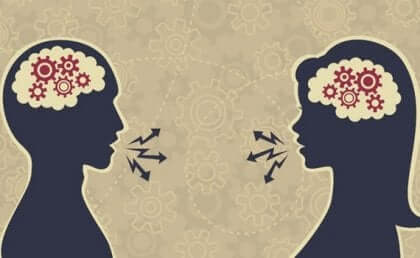Language is an instrument that humans use to communicate and think and is represented in various areas of the brain. Thus, the brain damage affecting these regions can cause changes in language, which is why many authors have been interested in the study of neural language models.
Some brain functions, including language, are not concentrated in a part of the brain, so that language occurs involves a whole group of cortical and subcortical regions.
Each of these regions leads to the end result, which will be the production and development of the language.
This way, if a component is damaged, the entire system will be affected. The main components of the language are in the dominant hemisphere (left) (1).
Therefore, compared to the neural models of language, we can distinguish between classic neural models of language and new language models.
In 1836, a French physician named Marx Dax presented his scientific work at the Congress of the Montpellier Medical Society, his work has focused on the relationship between aphasic patients and injuries in the left hemisphere.
This is how it was concluded that the tongue is lateralized (left hemisphere).
Soon after, anatomist, physician and anthropologist Paul Broca contributed to this fact, who introduced a patient with lesions in the frontal lobe of the left hemisphere, who had problems with language production.
Another neurologist known for his work in developing neural language models was Wernicke. In 1874, this neurologist and psychiatrist discovered a relationship between the injury of the first left temporal convolution (Wernicke region) and the loss of language comprehension.
A few years later, American neurologist Norman Geschwind proposed a neo-connectionist model. The scientist suggested, on the one hand, that the linguistic ability to name objects implies the confluence of semantic representations of various modalities.
In turn, it notes that the lower parietal lobe has unique properties of the human species, and concludes that the place of ability to name objects is in the lower parietal lobe.
In addition, neuroscientist Roger Sperry, winner of the Nobel Prize in Medicine for his brain lateralization experiments, also contributed to this change.
In his research, Sperry has shown that the hemispheres are specialized, he also highlighted the role of the callous body in functional integration, from these studies it could be inferred that most of the population has a language located in the left hemisphere.
As research progressed, it became increasingly clear that language was a complex system. The classic model focused on the importance in the crucial areas of Broca, Wernicke, angular rotation and folded paper.
In contrast, current models include language processing at different levels and according to flows organized into “paths”.
This model consists of an entrance (by the ventral) and an exit (by the ridge), so the ventral road would be responsible for:
In turn, the exit or secondary road would include
Language is found not only in one, but in many of the brain lobes. Thus, each lobe records information in different regions according to a gradient structure: first, the phonological information is recorded in the dorsal areas; then syntactic information and semantic representations in the most ventral part.
In turn, the lobe of time is responsible for storing new words and retrieving stored words; the parietal lobe is responsible for a more analytical treatment; the frontal lobe has an important function of synthesis, responsible for understanding and expression.
Finally, we note that when there is a change in the ability to use a previously acquired language, it is called aphasia.
Thus, it seems clear that although language is lateralized in the left hemisphere, to produce, develop and understand language, it is necessary to use various parts of our brain.
The result (language) occurs through the integration of multiple domains, all of which are essential for proper production and understanding of it.

